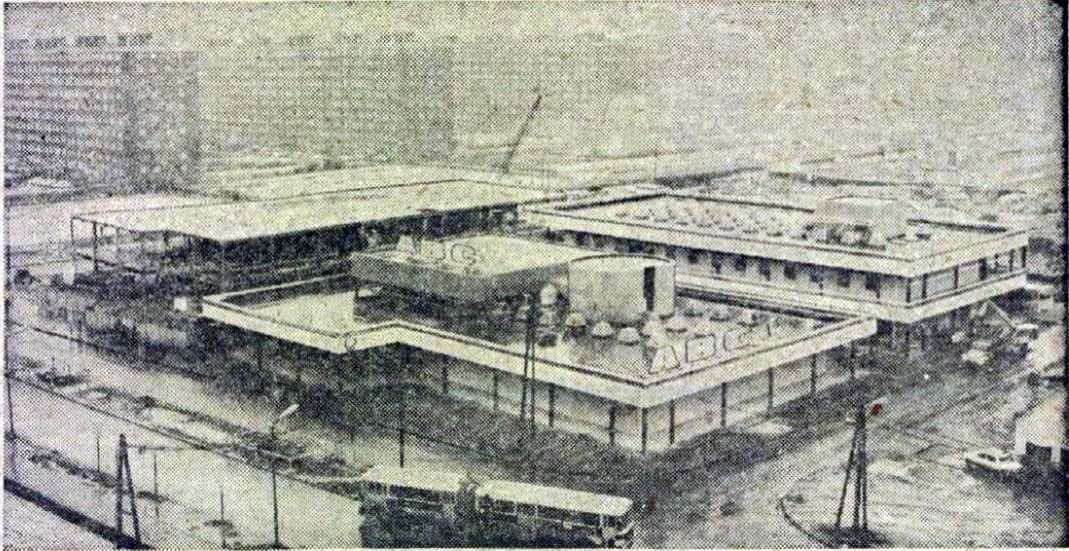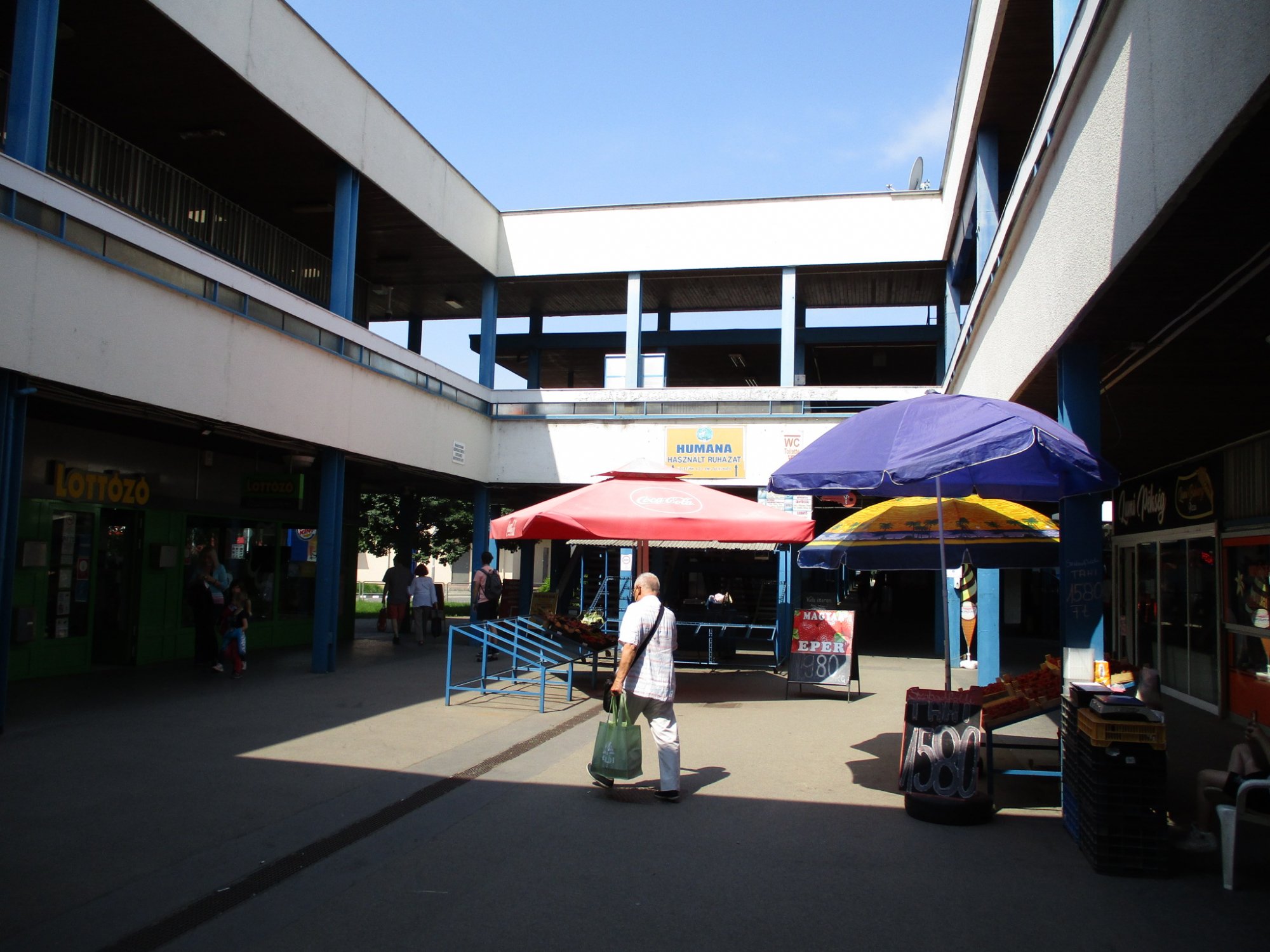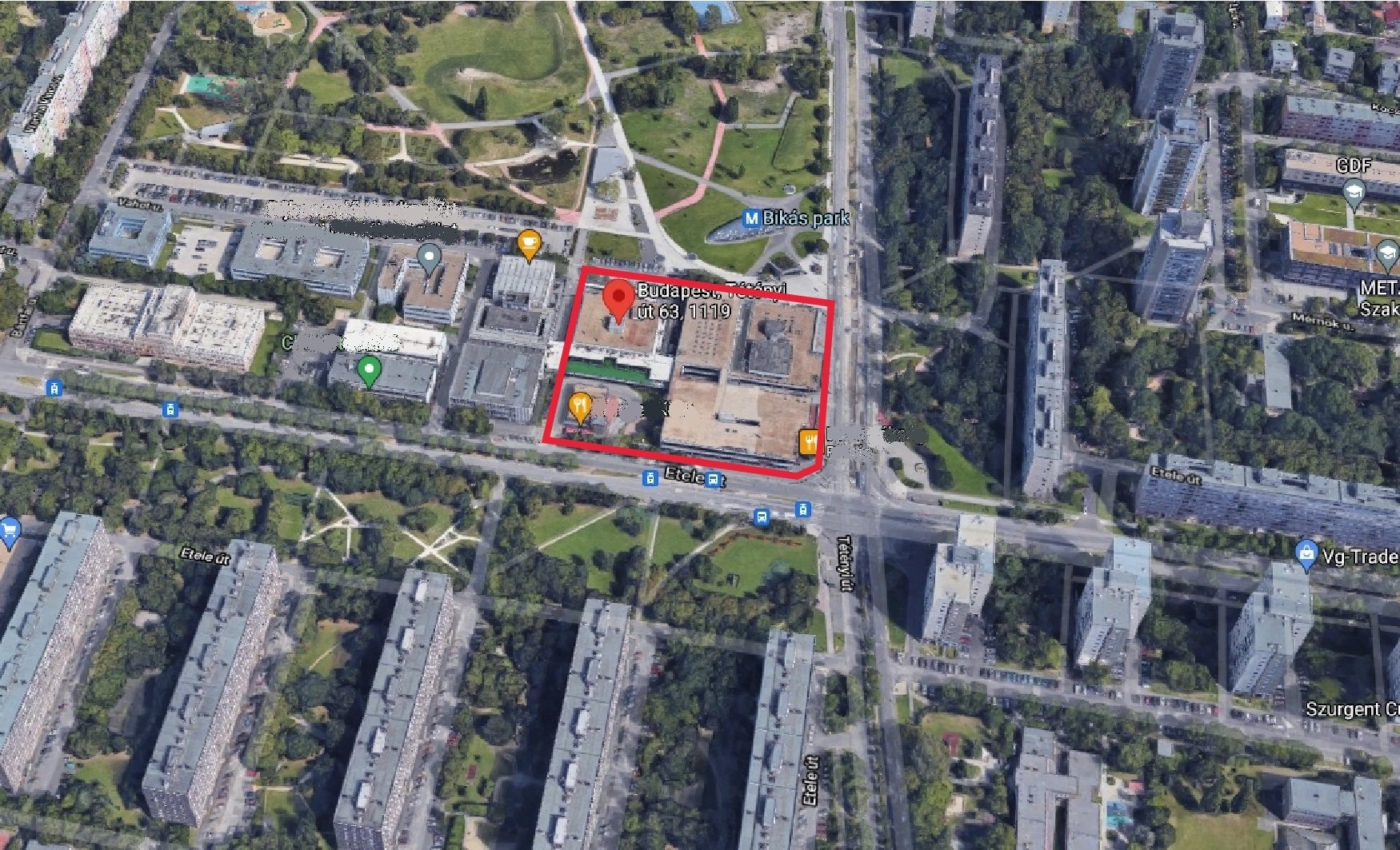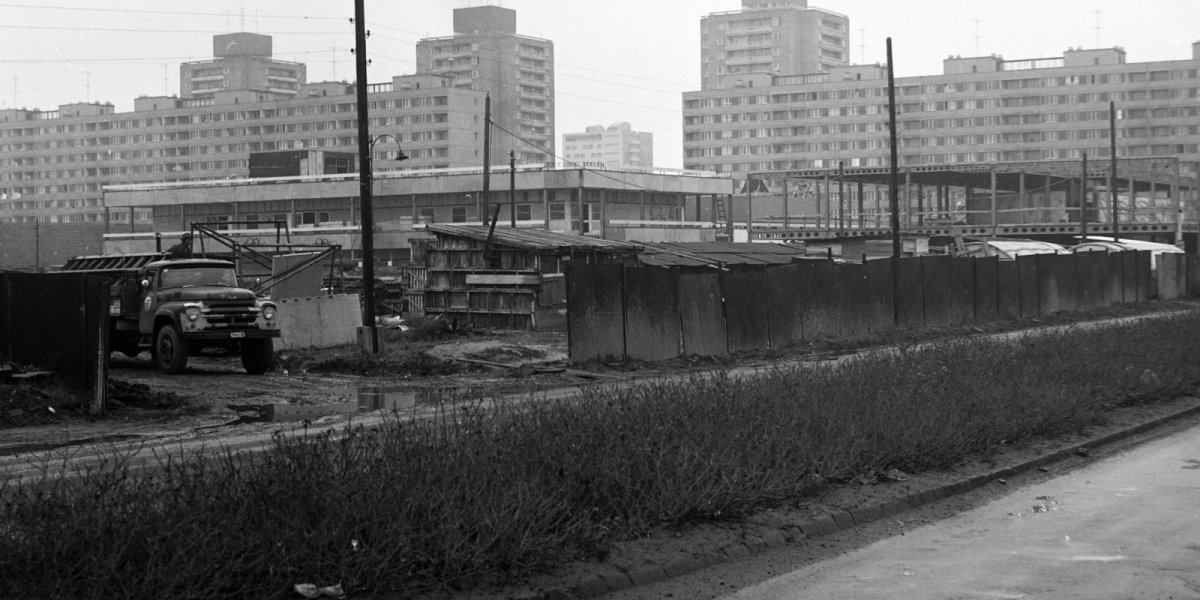The construction of the housing estate in Kelenföld started in 1966. In the huge part of the city, the city centre, the service house was designed to serve the flats, which was built between 1974 and 1979 in two instalments.
In the early 1970s, there was a constant complaint from recent movers that there were no suitable shops, no community space or confectionery in the Kelenföld housing estate. Since in the socialist system, by their nature, these functions also appeared as state tasks, the state or local body, the capital city council, ensured the development of appropriate services.
The service house itself was built according to the plans of István Zilahy and József Bada, who wanted to create an “anti-sleeping city” from Kelenföld, i.e., to give a local city centre to the district where a wide range of services are available and therefore there is no need to travel to the city centre.

The semi-finished city centre was photographed on 24 December 1974 by Népszabadság
Even though the plans for the service house were ready as early as 1969, and were even reported in the newspapers of the time, the practical implementation was delayed for another five years. It was not until the summer of 1973 that Népszabadság wrote that preparations for the construction of the city centre had begun. As an investment by FŐBER, work began by State Construction Company No. 43 in 1974 on the site. The first building, the ABC store, was completed by March 1975.
The building consists of practically six parts, these are light, steel-framed structures connected by terraces on the second level. In the current call for tenders, on the website of the district local council, this is stated: "The uniform appearance is given by the covered pedestrian street "connecting" the buildings and the large part of the pedestrian terrace on the first floor." After the first phase, in the second phase, the service block was completed, as written by Esti Hírlap on 17 March 1975, the day ABC opened:
“At the end of April, the service house will open in 1518 square metres, on its two levels, there are rental, Gelka service, greengrocer, tailor, photographer and the Cleaning Company. By August, the two-storey, 3,000-square-metre department store will also be completed, with shops and services: haberdashery, shoes, baby shops, flowers, iron and cookware, KERAVILL as well as Patyolat, barber and lottery. Behind it, on Szakasits Árpád Road [today's Etele Road - Ed.], the catering complex is being built: a restaurant, a bistro, a café. ”
The investment continued according to plan, and by 1979 the three-storey house of culture was completed (today it is the Budapest Cultural Centre), including the branch library of the Szabó Ervin Library. By the turn of 1979-1980, due to the upcoming Moscow Olympics, a cinema named Olimpia, which would have originally been named Etele was also handed over.
The leaders of the country were so proud of the housing estate built with Soviet housing technology and the new city centre of Kelenföld that it was even shown to their owner, the Soviet party secretary Leonid Brezhnev, in early June 1979 when he visited Hungary.
 The service house today (Source: Ujbuda.hu, downloadable material of the tender)
The service house today (Source: Ujbuda.hu, downloadable material of the tender)
The service house was indeed a gap-filler, although not everyone was happy with the location of the shops. The following reader's letter appeared on 11 January 1979, in Ludas Matyi (which was a satirical weekly under strict political control):
"STROLLER RAMP" - or what is not there. I live in Kelenföld, I am a new mother. Like so many people here, we go shopping at the service house at the intersection of Tétényi Road — Szakasits Árpád Road. We were delighted when this line of business was handed over, but we became very sad to find that no ramps were built for the strollers. If the mother has a deeper stroller, she cannot pick it up even if she happened to be a bodybuilder. If she is walking with a folding stroller, she can hold this “vehicle” in one hand, taking her baby in the other, and in the third, she can take the bag, or if she may not have a third hand, she can hang the bag around her neck. Very comfortable.
A special concern is that the baby shop, shoe shop, household and crockery store and the Röltex store are located upstairs, the Keravill, the men's hairdresser, the lottery, and the Gelka service are located on the ground floor, although - not only for mothers with strollers but anyway - rationality would have indicated a reverse order. It is only better to climb the stairs if you are sitting at the hairdresser anyway than if you are buying baby clothes or rubber panties.”
Accessibility was later remedied, in the last phase, a ramp to the upstairs terrace was built during the construction of the house of culture and the cinema.
The light structural use building, built in the 1970s, is now completely obsolete, it is not worth renovating according to the owner municipalities, a new one needs to be built. As a special solution, the service house is not being rebuilt as an own investment but has been offered for sale. For the 12 thousand square metres share of the capital and the 2 thousand square metres share of the district municipality (the BMK and the former Olimpia cinema building are not among the buildings offered for sale), the capital and district authorities are waiting for a purchase offer in which the applicants are enclosing plans for the house to be built, which - according to the promises - will not change the nature of the service house, i.e., according to the promises no residential park or office building would be built here.
 The part of the building offered for purchase (from the application material uploaded to the website of the 11th District)
The part of the building offered for purchase (from the application material uploaded to the website of the 11th District)
A new mall will soon open nearby. However, the Kelenföld department store offers such services, including stores, that cannot offer their services or goods in a mall, or only at a much higher price level.
Cover photo: Shopping centre at the intersection of Etele (Árpád Szakasits) Road - Tétényi Road in 1976 (Photo: Fortepan/No.: 187755)




































Hozzászólások
Log in or register to comment!
Login Registration